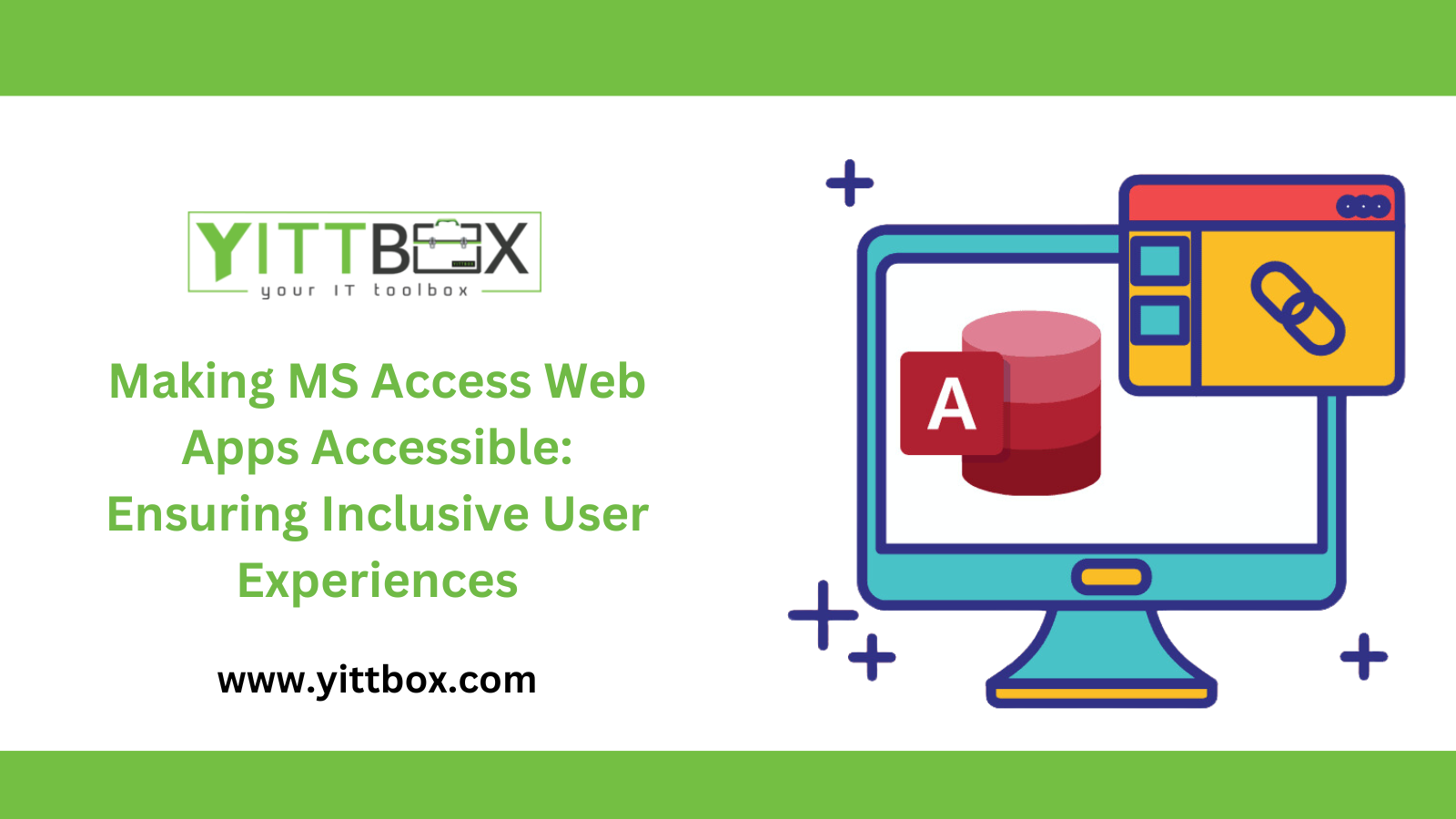Introduction:
Accessibility is a fundamental aspect of modern software development, ensuring that technology is usable by all individuals, regardless of ability. In this comprehensive guide, we'll delve into the accessibility features available in MS Access Web Apps and explore how they contribute to creating inclusive user experiences. From screen readers to keyboard navigation, discover how MS Access Web Apps can be tailored to meet the needs of diverse users.
Understanding Accessibility in MS Access Web Apps:
Accessibility in MS Access Web Apps refers to the design and implementation of features that enable users with disabilities to access and interact with the application effectively. We'll explore the various accessibility standards and guidelines that inform the development of accessible software, including the Web Content Accessibility Guidelines (WCAG) and the Americans with Disabilities Act (ADA).
Screen Reader Compatibility:
One of the key accessibility features in MS Access Web Apps is compatibility with screen reader software. Screen readers provide auditory feedback to users by reading aloud the content displayed on the screen. We'll discuss how developers can ensure that MS Access Web Apps are compatible with popular screen readers such as JAWS, NVDA, and VoiceOver, enabling users with visual impairments to navigate the application with ease.
Keyboard Navigation:
Keyboard navigation is another essential accessibility feature that allows users to navigate and interact with MS Access Web Apps using only the keyboard. We'll explore best practices for implementing keyboard shortcuts, focus management, and other keyboard navigation techniques to ensure that users can access all functionality without relying on a mouse.
High Contrast Mode:
High contrast mode is a visual accessibility feature that enhances readability for users with low vision or other visual impairments. MS Access Web Apps can be designed to support high contrast mode by providing distinct color schemes and ensuring sufficient color contrast between text and background elements. We'll discuss how developers can optimize the visual design of MS Access Web Apps to accommodate users who rely on high contrast mode.
Text-to-Speech Conversion:
Text-to-speech conversion is a valuable accessibility feature that allows users to listen to text-based content instead of reading it visually. We'll explore how MS Access Web Apps can leverage text-to-speech technology to provide auditory feedback for users with reading disabilities or other cognitive impairments. Developers can implement text-to-speech functionality using built-in browser APIs or third-party libraries.
Customizable User Interface:
Customizable user interface features enable users to personalize their experience according to their individual preferences and accessibility needs. We'll discuss how developers can implement customizable font sizes, color themes, and other interface settings in MS Access Web Apps, allowing users to tailor the application to suit their unique requirements.
Compliance with Accessibility Standards:
Ensuring compliance with accessibility standards is essential for maintaining inclusivity in MS Access Web Apps. We'll provide an overview of the key accessibility standards and regulations that apply to software development, including WCAG, ADA, and Section 508 of the Rehabilitation Act. By adhering to these standards, developers can ensure that MS Access Web Apps are accessible to all users.
User Testing and Feedback:
User testing and feedback are critical components of the accessibility development process. We'll discuss strategies for conducting accessibility testing with users who have disabilities, soliciting feedback, and incorporating user input into the iterative design process. By involving users with disabilities in the testing phase, developers can identify and address accessibility barriers effectively.
Conclusion:
In conclusion, accessibility features play a vital role in ensuring inclusive user experiences in MS Access Web Apps. By implementing features such as screen reader compatibility, keyboard navigation, high contrast mode, and text-to-speech conversion, developers can make MS Access Web Apps accessible to users with a wide range of abilities and disabilities. By prioritizing accessibility, developers can create software that is usable by all individuals, regardless of their physical or cognitive limitations.
For personalized insights, reach out to us at [Sales@Yittbox.com]







